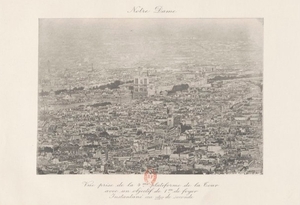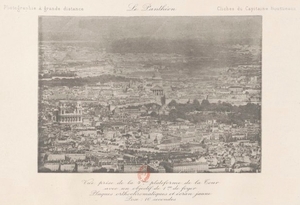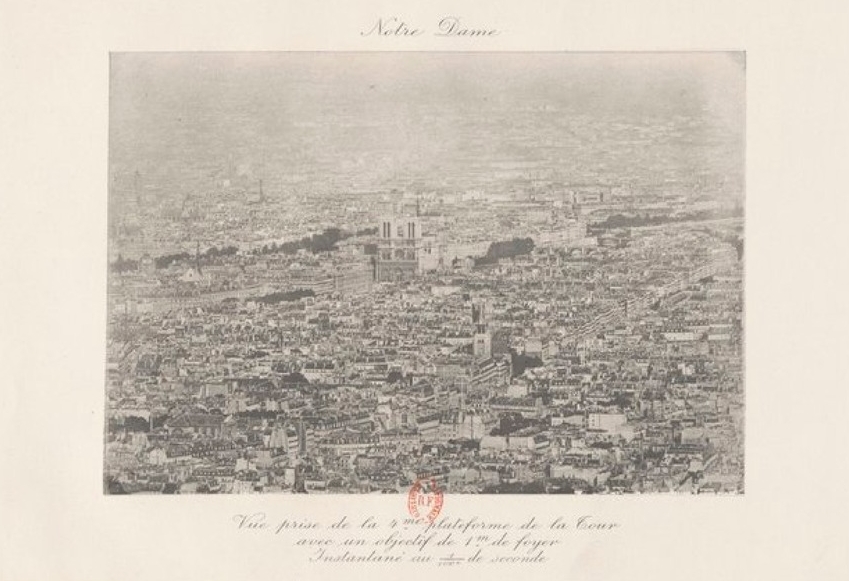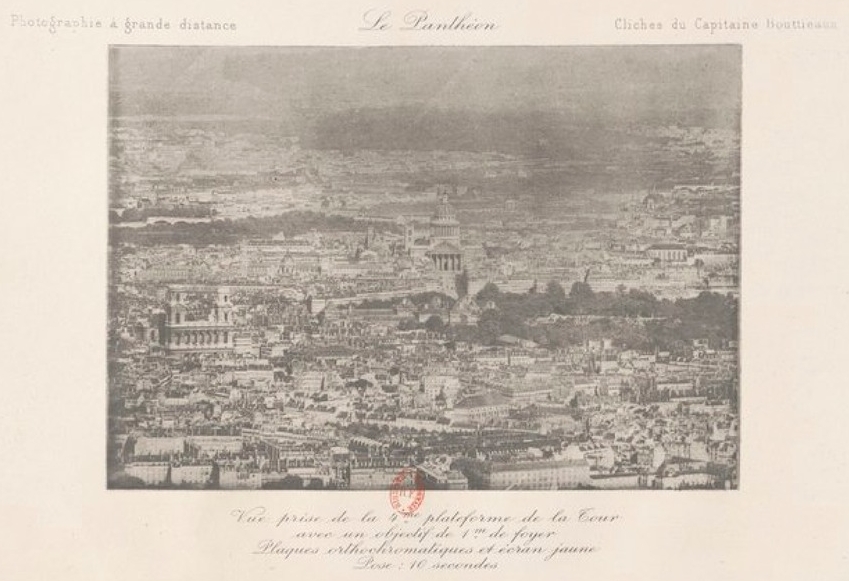Telephotography is a process of photographing distant objects using a telephoto lens and, by extension, this is what is called the snapshot taken by this process. Nowadays, it is simply a camera equipped with a zoom, but at the end of the XIXe century, it was less simple to realize than it seems.
experiments telephotography were made in 1896 from the terrace of the 3th platform by the Captain of the Engineers, MV Bouttieaux, assistant to the chief of the equipment of the Engineering at Versailles, who published the most interesting memoirs on balloon telephotography (Journal of Aeronautics, 1894). Captain Bouttieaux kindly handed over some of his photographs, two of which are reproduced below. This person has attached a summary note on his operating procedures which are reproduced here. What emerges is that the photographic process is rather good, but that it must remain in a rather restricted range of conditions: No significant wind, no photographs beyond 5 Kms, etc.

View of the Eiffel Tower: Notre Dame Cathedral

View of the Eiffel Tower: The Pantheon
« These experiments included two distinct series:
1. Instant photographs, made with cameras studied for balloon photography (shutter with a speed of one hundredth of a second). The Montmartre and Concorde tests give samples of the results obtained; the shots are extremely sharp, with the objective of 1 m of focus, and can be enlarged up to 40 and 50 times.
2. Photographs with long-focus lenses and telephoto lenses. It is essential in this case, to obtain as much sharpness as possible, to use ortho-chromatic plates and a yellow screen. The objectives of 1 m focal point, under these conditions, require a pose of 8 to 10 seconds with a diaphragm of the sharpness can be kept with this exposure time, when there is little wind. Nevertheless, the clichés are never as clear as in the first series, because of the vibrations of the Tower. When there is wind, it is impossible to think of obtaining photographs asked, the swaying of the Tower give blur to the tests.
Here is for long-term goals. Telephoto lenses with high magnification require exposure times of up to one and two minutes, and can only be used in nil winds; again, in this case, the movement of the lifts brings a certain vibration which removes sharpness from the clichés. It follows from the facts above that in the case of a metal observatory like the Tower, it is suitable for long distance photography:
- 1st Using long-focus lenses (1m focal length)
- 2nd To make use of orthochromatic plates with yellow screen when the wind is weak (tests)
- 3rd Only make snapshot when there is a noticeable wind
On October 6, 1896, the day of the arrival of the Tsar in Paris, the clichés posed were vague, while snapshots are perfectly detailed. As distances, it is difficult, unless exceptional times, to exceed 4 or 5 km; the most favorable time is always towards the end of the afternoon. »
Thus ends this report on the use of the Eiffel Tower as part of a telephotography experiment.
See also:






















